Looking over the 15 plus brands inside the Swatch Group, it feels rather straightforward to categorize each company into its own range sorted by overall accessibility. One brand that defies this expectation, however, is Mido. It would be simple to place the brand — which is celebrating its centennial anniversary in 2018 — within the same section as siblings Tissot and Rado. If you solely look at the asking price of each model, this makes a whole lot of sense. All three offer a lot of watch for your dollar but Mido is able to balance a wide variety of collections at an affordable price tag — similar to Tissot’s approach — while experimenting with different case materials — like Rado’s use of ceramic — allowing for a value proposition that differs from any other in the monolithic Swiss conglomerate. We recently took a hands-on look at the Multifort Chronograph PVD Special Edition; today, however, we’re reviewing the Ocean Star Caliber 80 with a titanium case.
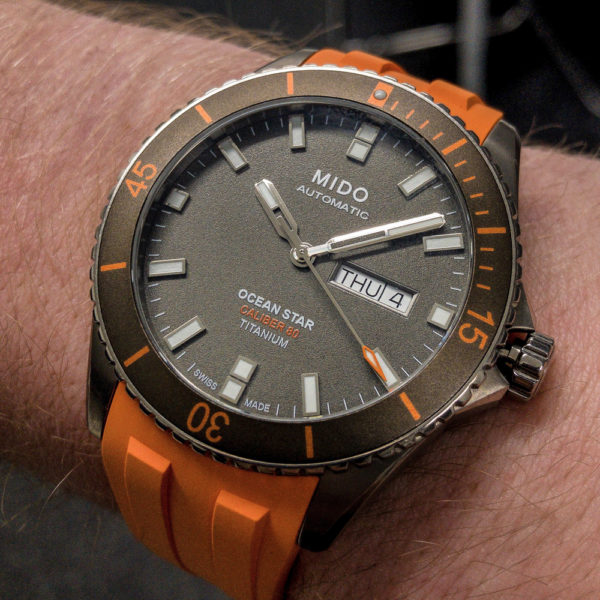
The specific model that I borrowed featured a bright orange rubber strap that I subbed out for a black NATO during the two months that I wore the watch off and on. The rubber strap felt high quality and matched the orange details on the bezel and dial seamlessly.
At 42.5 mm, the Ocean Star is nicely sized. It’s substantial enough but doesn’t engulf the wrist in any way. It helps that the titanium case makes the watch ultra-light and, with a height of 11.75 mm, the watch is in a good zone for flexing between the office, the gym, and even the beach. Although I wore this throughout the winter, it is distinctly a summer watch thanks to its cheerful and colorful aesthetic. We’ve recently seen an influx of polychromatic divers — check out the new Audemars Piguet Royal Oak Offshore Divers unveiled at this year’s SIHH and the Bulgari Diagono Scuba from last year for further proof — but since this watch was technically released all the way back at Baselworld 2016, you could view it as a bit of a trendsetter.
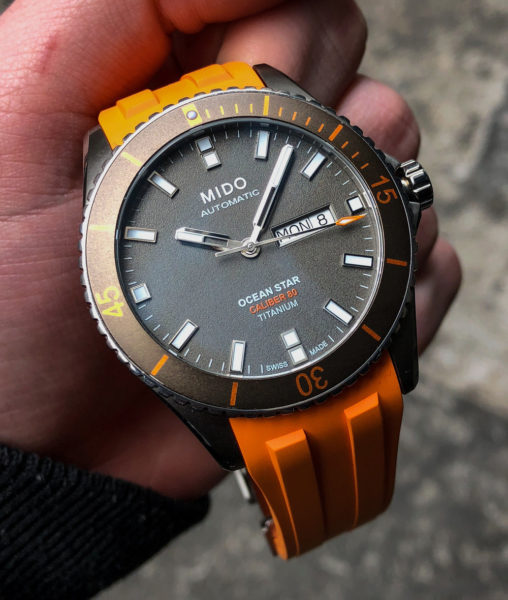
Other than the orange accents, what immediately catches the eye design-wise is the grated dial finish. This matte style is often seen on watches that are multiple times Mido’s price point, so it’s another addition to the watch’s overall value. On top of the dial is a sapphire crystal with a double-sided anti-reflective treatment. There are some people that might never notice the dial and crystal treatment but as someone that photographs watches nearly every day, it’s a nice bonus; plus, the enhanced legibility improves its sport-readiness a considerable amount. After all, if you are outside all day, whether on a beach or skiing on a mountain, it’s beneficial to be able to tell the time at a glance. Speaking of its sportiness, it’s worth noting that the watch has a screw-down crown and boasts a water resistance rating of 200 m.
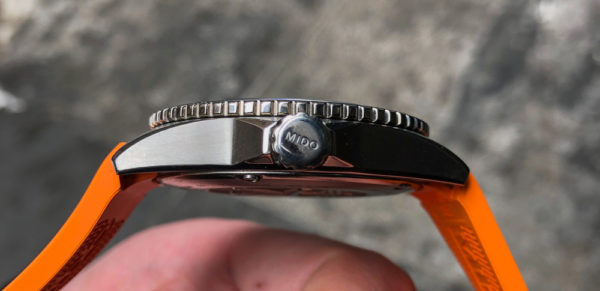
Date purists beware: the day/date indicator is hard to ignore and takes up considerable space at 3 o’clock. It’s unlikely that many people are going to use the Ocean Star for actual diving so it isn’t the sin that many sport watch enthusiasts make it out to be, however, it may turn off the aforementioned pedants. The truth of the matter is that Mido is appealing to a broader audience with this watch that have more use for the day/date indicator than the small niche market that curse the complication.
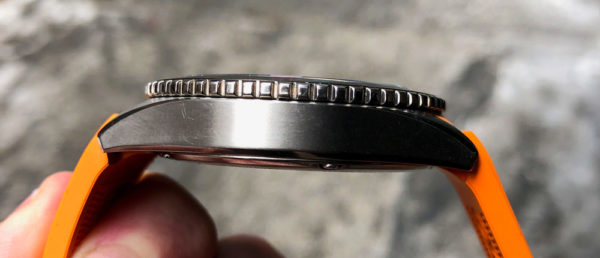
Inside the watch is the Mido Caliber 80. This is a modified ETA CO7.621. with a silicon balance spring making it one of the highest-quality movements that you can find in the sub-$1,000 price range. It’s based on an ETA 2824-2 with its frequency reduced to 21,600 Hz and an improved mainspring capacity. You might recognize it from its appearances inside the Tissot Powermatic 80, Certina Powermatic 80, and the Hamilton H-10. The main difference here is that the Mido Caliber 80 was the first one of those four to be updated with a silicon hairspring. However, Tissot soon followed suit in 2017 with the introduction of the Ballade Powermatic 80.
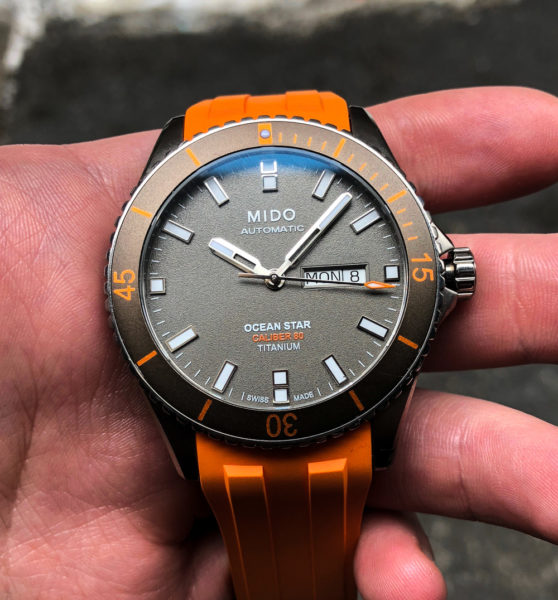
Inside the Swatch Group, the most comparable models to the Ocean Star are the Tissot Seastar and Hamilton Khaki Navy Auto. At $1,000, the Ocean Star is more pricey than the Seastar and less expensive than the Frogman. All three models use the same base caliber so the choice between them should be based on personal preference. However, the dial finish and option to upgrade to a titanium bracelet for only $40 more makes the Mido a strong contender. Outside of the Swatch Group, similar watches in style and price point include the Glycine Combat Sub and Alpina Seastrong. The Glycine can be found for slightly less money but given the uncertainty of the brand’s future under its new ownership, going for the Mido might be the safer bet. The Alpina is perhaps the closest competitor to the Ocean Star. They’re priced almost identically and have a comparable style. There is a chronograph version of the Seastrong available for not much more money so it’s really splitting hairs at this point. Regardless, the Ocean Star is a solid dive watch that is worth the price of admission for its use of titanium, its inner movement, and the dial finish alone.
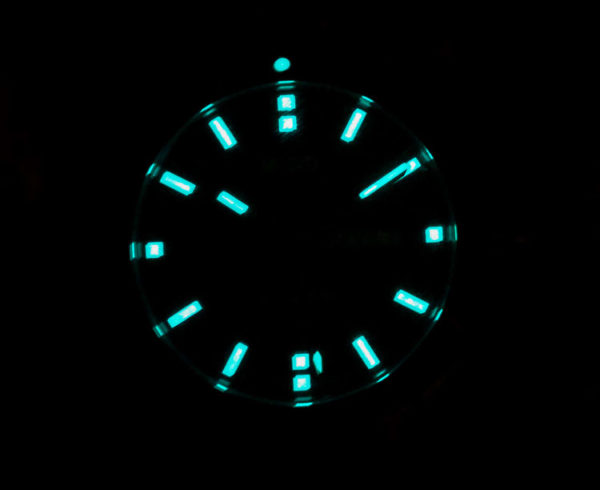
The Mido Ocean Star Caliber 80 is available for $1,000 on a rubber bracelet and $1,040 on a titanium bracelet. You can learn more here.
Read our review of the Mido Multifort Chronograph PVD Special Edition here.


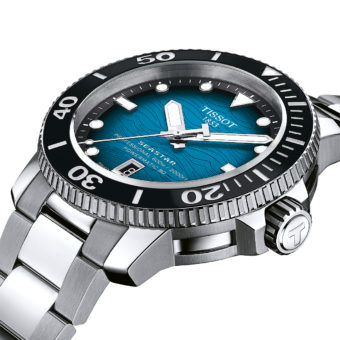
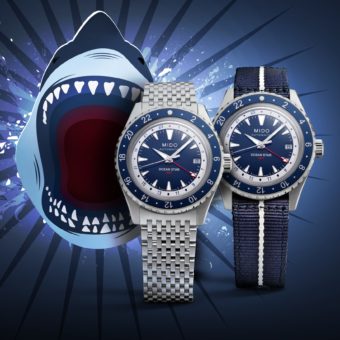
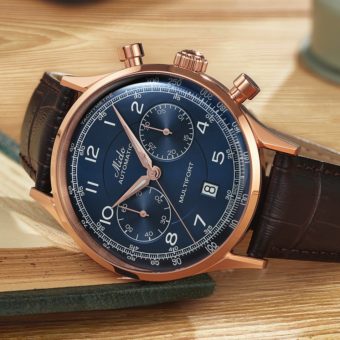
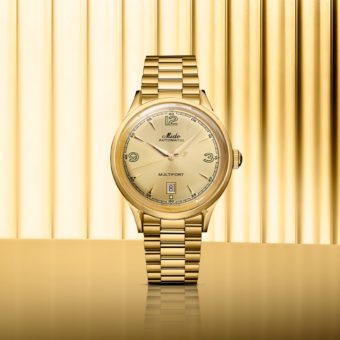
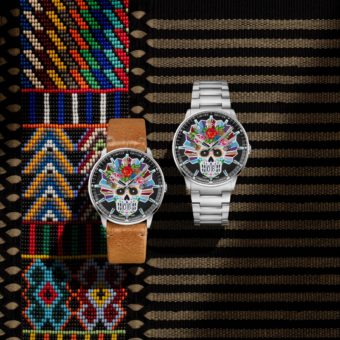
Hi I just notice you saying “frequency reduced to 21,600 Hz” thats obviously a mistake its 21 600 beats per minute (bpm) or 3Hz. Not 21 600 hz ;).
I have owned this watch for some 14 months and it’s my daily beater, even in preference to my several Omegas. The quality of the finish and the spec are fantastic at this price point. I’m about to buy the green dial/bezel version with PVD stainless case and brown leather strap. €789 is a snip for this quality.
The myth will never die it seems. I wouldn’t assume the Mido (or the Hamilton versions) are the same than the Tissot/Certina Powermatics. They are related but not the same movements. That the most widely used P-80 movements (the non-COSC) have 23 jewels while the Caliber 80 and H-10 have 25 does reveal different fundamentals with the escapement.
I believe your statement “a noticeable sheen.
Inside the watch is the Mido Caliber 80. This is a modified ETA CO7.621. with a silicon balance spring making it one of the highest-quality movements that you can find in the sub-$1,000 price range.” is wrong. Based on my review of the Mido website it appears there are two versions of the 80 movement and only the CALIBER 80 CHRONOMETER has the silicon balance spring.
A great looking and functional watch at a reasonable price.
I would disagree, I think Hayek is undershooting the potential of what could be a near ‘Star-Brand’, to say, it is a sibling of Tissot and Rado, I feel short changes it, Certina, once the Brand of the Kurth family, long dormant since the 1950’s more so would be the case, pun intended, but Mido, has the potential to be a more up-market Sport Category Brand in Name, Finish and History. No short changing to the new Rado, who finally has moved from it’s lethargic design niche, and once out of an ethnic corner, forced on it by SWATCH, can grow as well.
I don’t understand what the fuss is about regarding the day/date movement on a diver. Here’s the way i see it: when i go on vacation to my favorite diving destination i might leave on a Saturday. If i have to return on the following Sunday for example, it’s nice to see what day I’m on and how many days of fun i have left. It’s easy to lose track of the days when you’re on vacation! And since this watch would likely be with me for the entire time I’m away, i want to be able to where it everywhere; including in the water. It’s really hard to find a legitimate dive watch with the day indicator which is how i found Mido. Alas, the case back on this guy doesn’t look like it could handle an actual dive though. Bummer! I might have to reach out to Mido to get confirmation that its stated depth rating is actually sufficient for a dive.
Could you post a table with the weight of the titanium parts compared to their OEM counterparts? What I would really like to see for the Tikka is a titanium bolt, which would be both lighter and stronger than the OEM steel bolt body. I have seen reports of Tikka bolt bodies breaking at the dovetail, so I don’t really trust the Tikka bolt. A one-piece design would probably be better. I would also like to see a titanium bolt-stop pin, since that is another Tikka part prone to breakage. It may be too much to hope for, but I would even like to see a titanium barrel with the same profile as the CTR barrel, although it would probably cost more than an entire CTR.
The grey dial with orange accents is great. Was tempted by this value in titanium. But my wrist being too small for 42/50mm was a bigger factor than the day complication.